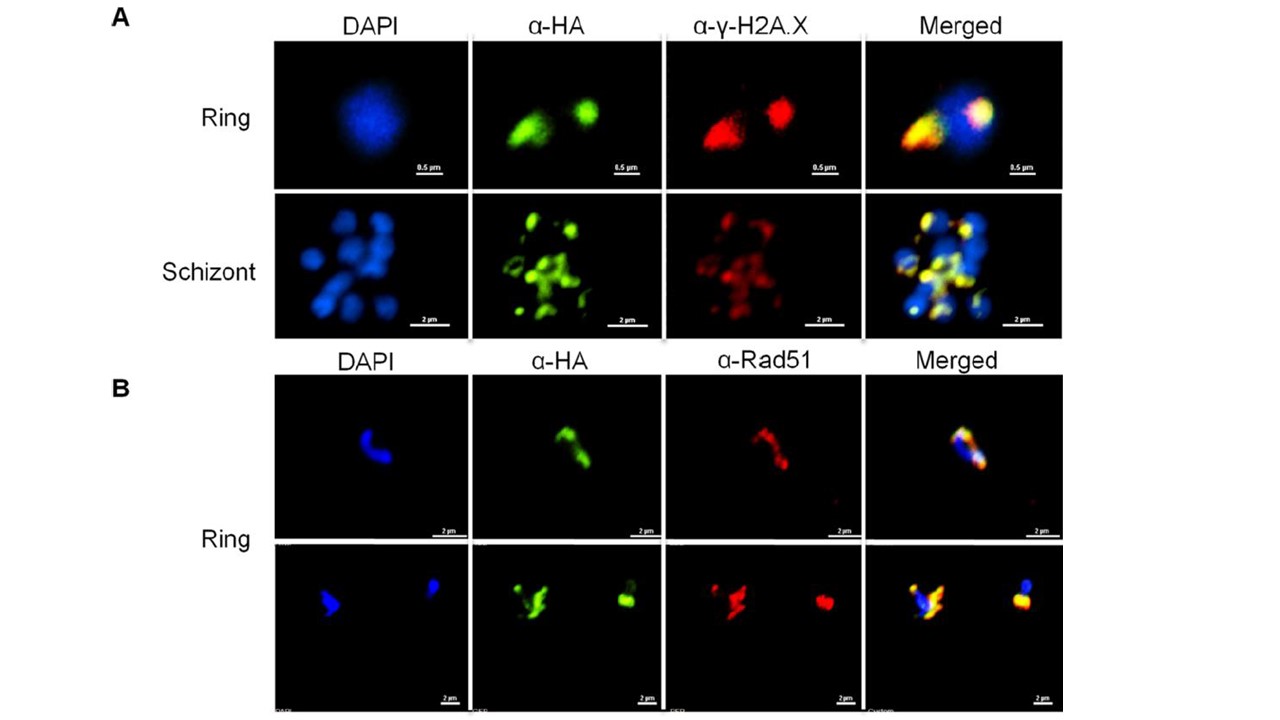PfSR1 is recruited to the site of damaged DNA and interacts with phosphorylated H2A. (A). Immuno-fluorescence assay demonstrating that PfSR1 (green) is associated with γ-PfH2A (red) in the nucleus of early (upper panel) and late stage (lower panel) PfSR1-glmS parasites 15 minutes after X-ray irradiation. (B). Immunofluorescence assay demonstrating that PfSR1 (green) co-localize with PfRad51 (red) in the nucleus of ring stage PfSR1-glmS parasites after X-ray irradiation. DNA is stained with DAPI. We found a strong association (78/83 independently counted nuclei) between PfSR1 and the site of DNA damage in both early and late stages parasites (A). In addition, we found that in irradiated ring stage parasites PfSR1 co-localizes with PfRad51 (5B, 39/50 independently counted nuclei), providing additional support for its recruitment to the site of DNA damage. Interestingly, we observed that in parasites that express PfSR1, γ-PfH2A signal disappears 4 hours post irradiation in parallel to the accumulation of PfRad51 in the nucleus
Goyal M, Singh BK, Simantov K, Kaufman Y, Eshar S, Dzikowski R. An SR protein is essential for activating DNA repair in malaria parasites. J Cell Sci. 2021 Jul 22:jcs.258572.
Other associated proteins
| PFID | Formal Annotation |
|---|---|
| PF3D7_0517300 | serine/arginine-rich splicing factor 1 |
| PF3D7_1107400 | DNA repair protein RAD51 |
